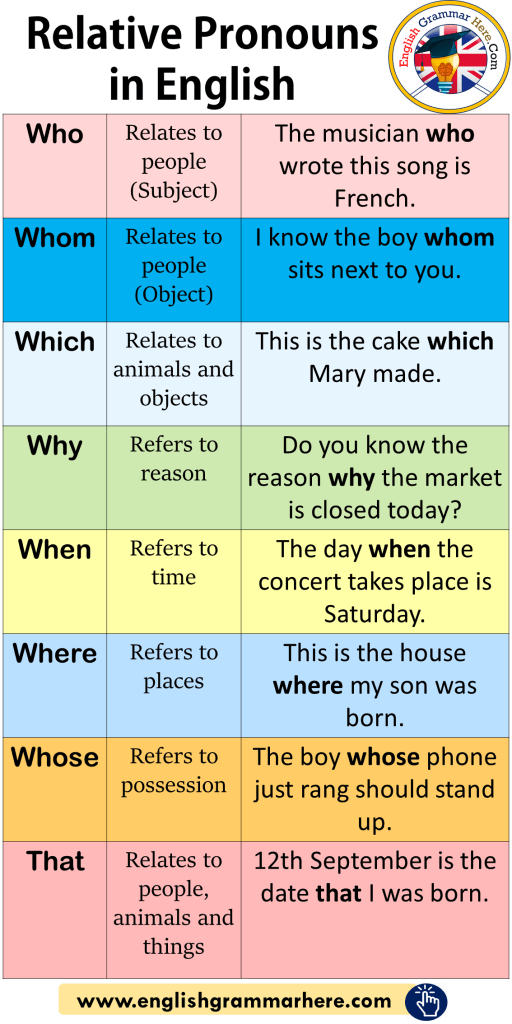

It is called a relative pronoun because it relates to the word that its. In the following example, the relative pronoun den is in the accusative because it is the direct object in the relative clause. In German, as in English, a relative pronoun is one of the words who, which and that (and the more formal whom). A relative pronoun is a pronoun that introduces a relative clause.Relative clauses are ALWAYS separated by commas from the rest of the sentence. The relative clause is simply the part of the sentence in which the relative pronoun appears. German relative pronouns must agree in gender and number with the noun to which they refer, but the case they have depends on their function in the relative clause. The most common relative pronouns are who, whom, which, and that. The relative pronouns are 'that,' 'which,' 'who,' 'whom,' and 'whose.' Here are two examples: I know the boy who found my wallet. A relative pronoun is one of several pronouns and is used to introduce a dependent clause. In German the most common relative pronouns der, den, dessen, dem etc have the same forms as the definite article, except in the dative plural and genitive singular and plural. A relative pronoun is a pronoun that heads an adjective clause. Relative pronouns can also introduce further information about someone or something, for example, Nico, who is a brilliant painter, wants to study art Susie’s house, which was built in 1890, needs a lot of repairs. These pronouns are used to introduce information that makes it clear which person or thing is being talked about, for example, The woman who has just come in is Ann’s girlfriend The vase that you broke was quite valuable.

In German, as in English, a relative pronoun is one of the words who, which and that (and the more formal whom).


 0 kommentar(er)
0 kommentar(er)
